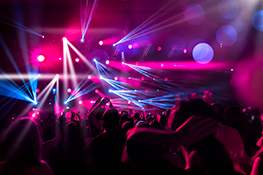Creating Atmosphere with Stage Lighting: A Guide to Mood and Emotion
Understanding the Power of Light
Stage lighting is far more than just illuminating a performance; it’s a powerful tool for shaping the audience’s experience. By carefully manipulating color, intensity, direction, and movement, lighting designers craft an atmosphere that enhances the narrative, evokes specific emotions, and ultimately elevates the entire production. This guide delves into the techniques and principles behind creating compelling stage atmospheres using lighting.
Color Psychology in Stage Lighting
Color plays a crucial role in setting the mood. Warm colors like reds, oranges, and yellows typically convey feelings of warmth, excitement, and energy. Think of a passionate love scene bathed in amber light, or a thrilling climax illuminated by fiery reds. Conversely, cool colors such as blues, greens, and purples often suggest calmness, sadness, or mystery. A chilling scene in a gothic play might benefit from deep blues and purples, while a serene moment could be enhanced by soft greens and blues. Understanding the psychological impact of different colors is key to effectively communicating the desired emotional response from your audience.
Light Intensity and its Emotional Impact
The intensity of the light directly influences the atmosphere. High intensity, or bright light, can create a feeling of openness, energy, and even aggression. Conversely, low intensity, or dim light, can suggest intimacy, mystery, or even fear. The careful manipulation of intensity through dimming and focusing can build dramatic tension, highlight key moments, or subtly shift the mood throughout the performance. Consider using intense spotlights to draw attention to a particular character or action, while employing softer, more diffused light for more intimate scenes.
Light Direction: Shaping Shadows and Focus
The direction of the light source is equally vital. Front lighting, where the light comes directly from the front, illuminates the subject evenly, creating a clear and open feel. Side lighting, coming from the sides, can add depth and dimension, creating shadows that heighten drama and intrigue. Backlighting, where light comes from behind the subject, creates silhouettes and a sense of mystery or separation. By strategically combining these techniques, lighting designers sculpt the stage, highlighting specific areas while leaving others shrouded in shadow. This strategic use of light and shadow is paramount in creating compelling visual storytelling.
Movement and Change: Dynamic Lighting Design
Static lighting, while having its place, often lacks the dynamism needed for a truly captivating performance. Movement, whether through the slow fade of a dimmer or the rapid shift of a gobo, adds another layer of depth and emotion. Consider using chases or crossfades to create a sense of urgency or transition between scenes. Dynamic lighting can mimic the ebb and flow of emotions, enhancing the overall narrative arc and engaging the audience on a visceral level.
Practical Considerations for Achieving Atmospheric Lighting
Choosing the right fixtures is critical. LED lighting offers versatility in color and intensity, making it an increasingly popular choice for stage lighting. Consider factors like color temperature, beam angle, and dimming capabilities when making your selections. Furthermore, effective communication between lighting designers, directors, and other members of the production team is crucial to ensure the lighting scheme aligns with the overall artistic vision.
Conclusion: Mastering the Art of Atmospheric Lighting
Ultimately, the mastery of atmospheric lighting relies on a deep understanding of color psychology, intensity control, directional manipulation, and the skillful use of movement. By harnessing the full potential of stage lighting, designers can transcend mere illumination and create immersive experiences that resonate deeply with the audience, leaving a lasting impact long after the curtain falls. Experiment, learn, and evolve your lighting design skills to become a master of mood and emotion on stage.


 Auditorium Construction Services
Auditorium Construction Services 